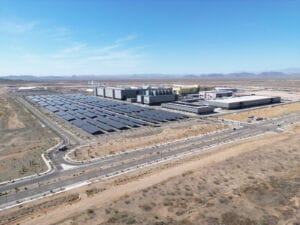Manufacturing today is more complex than ever. Tight deadlines, expensive materials, and rising customer expectations make efficiency and precision essential. Every small mistake can mean lost time, wasted resources, and dissatisfied clients. That’s why more companies are investing in modern cutting solutions that align with their long-term goals.
Among the most effective innovations shaping the industry is waterjet cutting. This technology delivers a combination of speed, accuracy, and versatility that traditional methods often can’t match. For manufacturers who want to stay competitive, such systems are becoming a strategic advantage rather than just a tool upgrade.
That said, let’s discuss how this technology strengthens your manufacturing strategy!
1. Precision That Builds Reliability and Profit
Every successful manufacturing strategy starts with precision. Inconsistent cuts or heat distortion can lead to rework, higher costs, and material waste. Traditional cutting systems like lasers and torches rely on extreme heat, which can weaken or deform the metal’s surface. Over time, this reduces part quality and increases maintenance needs.
That’s why many businesses now depend on advanced systems from brands like OMAX. Their technology uses a powerful stream of water, sometimes combined with an abrasive, to cut through metal, stone, glass, and composite materials without generating heat. Because it’s a cold-cutting process, there’s no warping, discoloration, or change in material structure.
This makes water jet cutting an ideal choice for industries that demand exact tolerances, such as aerospace, automotive, or electronics. Every edge comes out smooth and ready for assembly, reducing finishing time and increasing yield. The consistency of results not only boosts productivity but also reinforces client confidence — a key part of any strong manufacturing strategy.
MORE NEWS: Phoenix bucket list: 25 things you must do
INDUSTRY INSIGHTS: Want more news like this? Get our free newsletter here
2. Flexibility and Cost Control Across Projects
Modern manufacturers can’t afford to specialize too narrowly. One day, you may need to produce thick steel components; the next, lightweight aluminum parts or precision plastic pieces. Waterjet cutting gives manufacturers the flexibility to handle all these materials using the same setup.
This adaptability eliminates the need for multiple cutting systems or frequent tooling changes, helping businesses streamline workflow and reduce downtime. The thin cutting stream allows operators to make tight nesting patterns, which saves material and cuts waste costs. For companies focused on lean production, this efficiency makes a measurable difference.
Operating costs are also predictable. With no high-energy lasers or expensive consumables to replace regularly, waterjet systems are more sustainable and cost-effective over time. Many manufacturers report lower electricity use, reduced scrap, and longer machine lifespan — all of which strengthen overall return on investment.
3. Supporting Sustainability
Sustainability isn’t just about meeting regulations anymore — it’s part of a brand’s reputation. Clients increasingly prefer working with manufacturers that operate responsibly. Waterjet cutting naturally fits into that framework because it’s an environmentally clean process.
Unlike heat-based cutting methods, it doesn’t release fumes, gases, or dust into the air. The process produces minimal waste, and the water used can be filtered and reused. Since the cuts are so precise, the amount of scrap material is significantly reduced, lowering both disposal costs and environmental impact.
These benefits extend to the workspace as well. A cleaner environment means safer conditions for operators and less need for extensive ventilation systems. For companies pursuing ISO certification or eco-friendly initiatives, waterjet cutting directly contributes to compliance and improved workplace safety. In an era where sustainability influences purchasing decisions, that’s a meaningful competitive edge.
4. Scalability and Competitive Growth
The best manufacturing strategies are built for growth. As businesses take on more projects and expand production, they need equipment that can scale with them. Waterjet technology supports that scalability effortlessly.
Because it can handle a wide variety of materials and thicknesses, manufacturers can accept new types of contracts without major reinvestment. Its digital precision also makes it compatible with automation and CAD/CAM workflows, allowing for integration with robotics and advanced production planning systems.
This scalability doesn’t just improve throughput — it opens new market opportunities. Manufacturers using advanced waterjet systems can compete for high-value jobs that require fine detail and consistent accuracy. Over time, this capability strengthens client relationships and helps companies stand out in competitive bids.
For a long-term strategy, scalability matters as much as speed. A system that grows with your business ensures steady performance and maximizes every dollar invested in technology.
Conclusion to Draw!
Waterjet cutting has become a cornerstone of modern manufacturing strategy. It offers a rare combination of precision, adaptability, and sustainability that helps companies maintain quality while managing costs.
With reliable solutions, manufacturers can produce cleaner cuts, reduce waste, and strengthen both efficiency and reputation. The result is a smoother production process and a stronger long-term position in a fast-changing industry.




